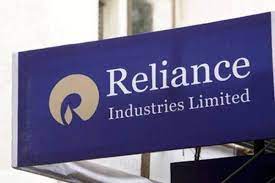New Delhi, Jun 24: Fitch Ratings has upgraded Reliance Industries Ltd’s (RIL) rating to ‘BBB’, one notch above India’s sovereign rating, as the company benefits from cash flow generation across diversified business segments and continuation of deleveraging.
In a statement, Fitch said it has upgraded RIL’s long-term foreign-currency issuer default rating (IDR) to ‘BBB’, from ‘BBB-‘, with a negative outlook. At the same time, the agency has affirmed RIL’s long-term local-currency IDR at ‘BBB+’ with a stable outlook.
RIL’s local-currency IDR reflects the company’s strong business profile, with market-leading positions and diversified cash flow from a mix of oil-to-chemical (O2C) and consumer businesses, as well as lower net leverage.
The firm has cut its foreign-currency borrowings outside India by 36 per cent following pre-payments of USD 7.8 billion in the financial year ending March 2021 (FY21).
This was achieved using part of the proceeds from the stake sales of digital-service and retail subsidiaries as well as a rights issue.
Fitch expected RIL’s EBITDA to increase to around Rs 1.1 lakh crore in FY22, supported by a recovery in petrochemical spreads, transportation fuel cracks, higher refining throughput and a continued rise in digital services EBITDA.
RIL had an EBITDA of around Rs 76,000 crore in FY21, 12 per cent lower year-on-year. Overall EBITDA generation was also supported by a 55 per cent surge in digital-services segment EBITDA, which defied the pandemic-related economic slowdown.
The FY21 drop in EBITDA was largely driven by the O2C segment, which saw a 31 per cent fall due to lower demand.
“RIL’s ratings benefit from cash flow generation across diversified business segments with unrelated industry drivers. This was reflected in FY21 when strong cash flow from telecom mitigated the impact on overall cash generation from the pandemic-affected O2C segment.
“Consumer businesses, including digital services and retail, contributed around half of the overall EBITDA generation in FY21 and we expect this to be the case over the medium term, even as O2C and upstream EBITDA rises,” it said.
Also, deleveraging is expected to continue, with net leverage, measured by net debt/EBITDA, falling to around 0.5x in FY22 (FY21: 1.3x, FY20: 2.3x), supported by positive free cash flow generation and the receipt of the balance of funds from the rights issue.
Capex is also likely to fall, averaging at Rs 55,000 crore a year in FY22-FY25 (FY21: Rs 1.1 lakh crore), as most planned capex has been completed.
Investment in new energy and materials, including renewable energy, carbon capture and the hydrogen economy, will drive future capex, as RIL aims to be net carbon zero by 2035.
While the O2C segment is expected to recover in FY22, telecom will see sustained growth. Also, retail segment revenue, excluding digital services, is expected to recover close to FY20 levels in the current fiscal, after dipping by 19 per cent in FY21 amid the pandemic, assisted by RIL’s expanding presence across physical and digital channels.
Fitch said its rating case does not consider RIL’s proposed acquisition of Future Group’s retail businesses due to uncertainty about the timing and associated litigation.
“The (rating) upgrade is driven by our expectation that RIL’s hard-currency external debt-service ratio will remain at above 1.0x over the next 12 months,” it said.
Fitch’s non-financial corporates exceeding the country ceiling rating criteria states that a company with a ratio of above 1.0x over at least 12 months can be rated one-notch above the country ceiling.
India’s country ceiling is ‘BBB-‘.
“The negative outlook reflects the outlook on India’s sovereign rating (BBB-/Negative); should the sovereign IDRs be downgraded, the country ceiling may be revised down in tandem. This would constrain RIL’s foreign-currency IDR to one notch above the country ceiling,” it added. (PTI)


